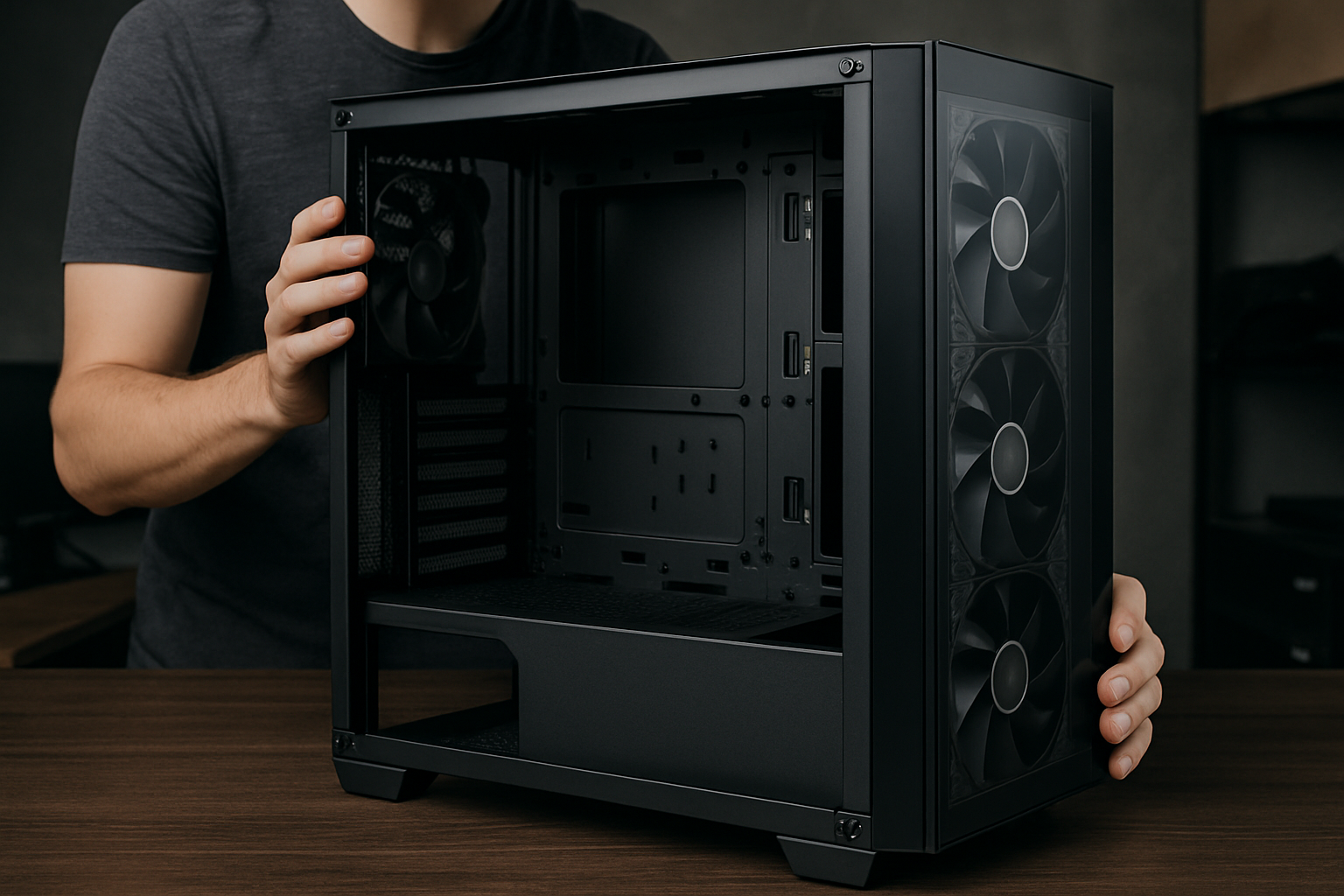When assembling a computer, many users focus on parts like the CPU, GPU, or RAM — and forget how essential a good PC case can be. Far from being just a “box” to hold your components, the case plays a vital role in airflow, temperature control, cable management, noise reduction, and even future upgrades.
If you’re building your own PC, don’t treat the case as an afterthought. In this article, we’ll show you why the PC case matters more than you might think and how to choose the right one for your needs.
What Is a PC Case?
The PC case, also called a chassis or tower, is the physical enclosure that houses your computer components — including the motherboard, power supply, drives, GPU, and fans.
A well-designed case not only protects your hardware but also:
- Facilitates optimal airflow
- Enables easy installation and upgrades
- Helps keep cables organized
- Reduces noise and dust buildup
Key Reasons Why a Good PC Case Matters
1. Airflow and Cooling
One of the most critical functions of a case is managing airflow to keep temperatures under control. Poor airflow leads to higher internal temps, which can:
- Reduce performance
- Shorten component lifespan
- Cause thermal throttling or unexpected shutdowns
A good case will:
- Have multiple fan mounts (front, top, rear)
- Include dust filters to keep internals clean
- Provide space for aftermarket coolers or even liquid cooling
Look for a mesh front panel or large air vents if you want strong airflow from the start.
2. Component Compatibility
Not all cases support all parts. You need to make sure the case you choose fits:
- Motherboard size (ATX, Micro ATX, Mini ITX)
- GPU length (some high-end GPUs are very long)
- CPU cooler height
- Power supply length
Check the product’s spec sheet to ensure compatibility with your components. Buying a too-small case can turn your build into a frustrating puzzle.
3. Cable Management
A cluttered interior isn’t just ugly — it restricts airflow and can lead to overheating. Quality PC cases offer features to help route cables cleanly, such as:
- Pre-installed cable channels
- Velcro straps or tie-down points
- Dedicated PSU shrouds
- Rubber grommets for clean routing
Proper cable management also makes future upgrades easier and gives your build a more professional look.
4. Noise Reduction
Some PC cases come with sound-dampening panels, anti-vibration rubber mounts, and smart airflow designs that help reduce fan noise. If you’re building a PC for a quiet workspace, music studio, or streaming environment, a quiet case can make a big difference.
5. Dust Control
Dust can slowly kill a PC if left unchecked. High-quality cases include:
- Magnetic or removable dust filters
- Positive pressure airflow design
- Easy-to-clean materials and panels
Cases with no dust management can lead to frequent cleaning or worse — overheating and component failure.
6. Aesthetics and Build Quality
Your case is the most visible part of your computer. Whether you want a sleek, minimal tower or a flashy RGB gaming case with tempered glass, there’s a style for everyone.
Features to look for:
- Tempered glass side panels
- Built-in RGB lighting or RGB support
- High-quality materials like steel and aluminum
- Tool-less access for panels and drive bays
A good-looking case can transform your desk setup into something you’re proud to show off.
7. Expandability and Drive Bays
If you plan to upgrade your PC in the future, make sure your case allows it. Look for:
- Extra drive bays (for SSDs or HDDs)
- Multiple PCIe slots for extra GPUs or capture cards
- Support for additional fans or radiators
- Front-panel USB 3.0 or USB-C ports
You don’t want to be limited by your case when it’s time to upgrade.
Types of PC Cases by Size
Understanding the form factor of a case helps you pick the right one based on your motherboard and space:
| Case Type | Fits Motherboards | Typical Use |
|---|---|---|
| Full Tower | ATX, E-ATX | High-end builds, water cooling setups |
| Mid Tower | ATX, Micro ATX | Most popular size, good for gaming PCs |
| Mini Tower | Micro ATX, Mini ITX | Small builds, HTPCs, space-saving setups |
| Small Form Factor (SFF) | Mini ITX | Ultra-compact builds, travel PCs |
Tip:
Always measure the space available on or under your desk before purchasing a case.
What to Look For When Buying a PC Case
Here’s a quick checklist to help you choose a great case:
- ✅ Good airflow design (mesh, fan mounts)
- ✅ Enough space for your GPU and cooler
- ✅ Cable management features
- ✅ PSU shroud for aesthetics and airflow
- ✅ Dust filters on all major intake/exhaust areas
- ✅ Build quality and finish
- ✅ Easy access for upgrades
- ✅ USB and audio ports on the front panel
Common Mistakes to Avoid
- ❌ Buying a case that’s too small for your components
- ❌ Ignoring airflow and thermal performance
- ❌ Skimping on cable management features
- ❌ Not checking dust filters or fan support
- ❌ Prioritizing looks over functionality (unless it truly fits your needs)
Final Thoughts: Don’t Underestimate the Case
A good PC case goes beyond appearance — it supports performance, longevity, and ease of use. Investing in a well-designed case can save you time, frustration, and even money down the road by improving cooling, reducing dust buildup, and making upgrades easier.
Whether you’re a gamer, a content creator, or building your first PC, choose a case that balances form and function — your components (and future self) will thank you.
